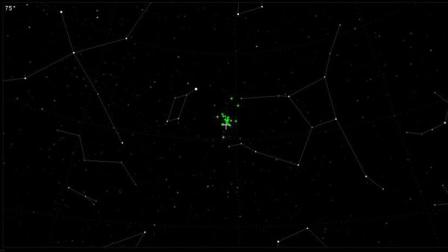April 22, 2014 (CHICAGO) (WLS) --
Lyrid meteor shower 2014 peaked in the early morning hours of Earth Day
2014, but is still visible through much of the week- weather permitting.
The Lyrid meteor shower is visible from April 16-25. "Everyone in the Northern Hemisphere with clear skies can see the Lyrid meteor shower," NASA astronomer Bill Cooke said on NASA.gov. "The best viewing will be between midnight and dawn, local time to wherever you are."
 |
| Lyrid radiants, seen April 20-21, 2013. The constellation Cygnus, also called the "Northern cross," is at top left; Vega and the constellation Lyra are to the left of the radiant, shown with green +s; and the constellation Hercules is to the right. The white + shows the predicted shower radiant. (NASA.gov) |
"Lie on your back and look up (avoid looking at the bright moon), allowing your eyes to take in as much sky as possible," he writes on NASA.gov.
NASA is streaming the shower from Huntsville, Ala., at http://www.nasa.gov/topics/solarsystem/features/watchtheskies/lyrids-ustream-2014.html#.U1aCZRDLJfY.
Lyrid are pieces of debris from the periodic Comet C/1861 G1 Thatcher and have been observed for more than 2,600 years, NASA said. Each April, Earth runs into the comet's stream of debris, and the Lyrid meteor shower is visible.
Ref :http://abclocal.go.com/wls/story?section=news/national_world&id=9512167
No comments:
Post a Comment